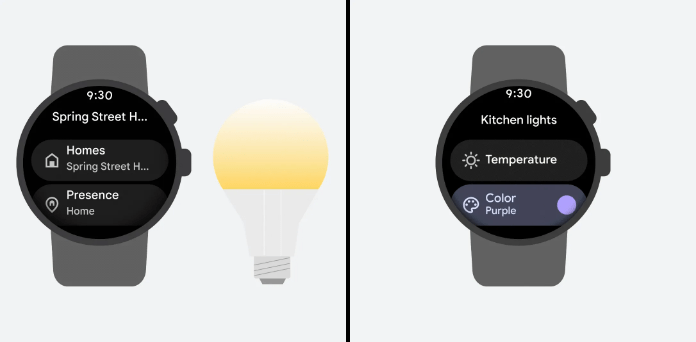Table of Contents
Latest Innovations in Wearable Tech
Innovations in wearable technology have revolutionized how we integrate technology into our daily lives. From tracking our fitness activities to managing our schedules, wearable tech has evolved rapidly over the past few decades. In this article, we will explore the journey from early forms of wearable tech to the sophisticated smartwatches we use today. We will also delve into the vital role fitness trackers play in promoting health and wellness and examine the innovative trends shaping the future of smartwatches.
Evolution of Wearable Tech
The evolution of wearable technology is a fascinating journey, beginning with rudimentary devices and culminating in the advanced gadgets we use today. Initially, wearables were simplistic and primarily served a single function. However, as technology progressed, so did these devices, incorporating multifaceted features and better integration with other technologies.
In this section, we will look at early forms of wearable technology, discuss the shift to modern wearable tech devices, and examine the influence of smartphone technologies in this transformation.
Early Forms of Wearable Tech
Early wearable tech devices were rudimentary and often single-purpose. One of the earliest examples is the wristwatch, which dates back to the late 19th century. These early devices were limited in functionality but were revolutionary for their time, offering a portable way to keep track of time without relying on stationary clocks.
Other notable early wearable devices included hearing aids and eyeglasses, which, although simple, provided significant enhancements to the quality of life. These early innovations laid the groundwork for future developments by pushing the boundaries of what could be achieved through miniaturization and portability.
The Shift to Modern Wearable Tech Devices
The transition from simple, single-purpose devices to modern wearable tech began in earnest in the late 20th and early 21st centuries. This shift was driven by advancements in microelectronics, battery life, and wireless communication. Wearables began to incorporate more sophisticated features, such as digital displays and connectivity with other electronic devices.
Modern wearable technology encompasses a wide range of devices, from fitness trackers to smartwatches and augmented reality glasses. These gadgets are not merely tools but have become integral parts of our daily routines, providing functionalities that extend far beyond their initial purposes.
Influence of Smartphone Technologies
The rise of smartphones has had a profound impact on the development of wearable technology. The miniaturization of components used in smartphones enabled the creation of more compact and functional wearables. Additionally, the software ecosystems developed for smartphones, such as mobile apps and cloud services, have seamlessly integrated with wearable devices.
Smartphones have also facilitated better connectivity and data sharing between wearables and other devices. For instance, fitness trackers can sync with smartphones to provide detailed health insights, making the data more accessible and actionable for users. This symbiotic relationship has propelled the innovation and adoption of wearable tech to new heights.
Top companies that produces Wearable Tech
Leading companies such as Apple Inc., Samsung Electronics, Fitbit (now part of Google) Google wearable, Garmin Ltd., Huawei Technologies Co., Ltd., Xiaomi Corporation, Fossil Group, Amazfit, Polar Electro, and Withings are at the forefront of producing wearable tech, constantly pushing boundaries with latest innovations in wearable tech. From advancements in fitness trackers to pioneering smartwatch technology trends, these innovators are shaping the landscape of wearable tech for health monitoring. As they anticipate the future of wearable devices, these companies continue to introduce cutting-edge features that enhance user experience and redefine personal health management.
Role of Fitness Trackers in Wearable Tech
In this section, we will explore the latest innovations in wearable tech, specifically focusing on fitness trackers. Fitness trackers have emerged as one of the most popular and impactful forms of wearable technology. These devices have revolutionized how individuals approach their health and fitness by making it easier to monitor various aspects of their physical well-being. They offer insights that were previously accessible only through professional medical equipment. We’ll delve into the trends in fitness trackers, their impact on health and wellness, and some key innovations that have made these devices indispensable tools for many.
Trends in Fitness Trackers
Fitness trackers have seen several trends over the years, from simple pedometers to advanced devices that can monitor a multitude of health metrics. One of the most significant trends has been the integration of heart rate monitoring, which provides users with more comprehensive data about their physical activity and overall health.
Another emerging trend is the incorporation of artificial intelligence and machine learning. These technologies enable fitness trackers to offer personalized recommendations and insights based on the user’s data. The development of waterproof and rugged designs has also expanded the use cases for fitness trackers, making them suitable for various environments and activities.
Impact of Fitness Trackers on Health and Wellness
Fitness trackers have had a significant impact on health and wellness by making it easier for individuals to monitor and improve their physical activity levels. These devices provide real-time data on various metrics such as steps taken, calories burned, and heart rate, empowering users to make informed decisions about their lifestyle.
The ability to set and track fitness goals has also been a game-changer. Many fitness trackers come with companion apps that offer detailed analytics and trends over time, helping users stay motivated and accountable. This increased awareness and engagement in personal health have led to better outcomes for many, including weight loss, improved cardiovascular health, and enhanced overall fitness.
Key Innovations in Fitness Tracker Devices
Several key innovations have driven the adoption and effectiveness of fitness trackers. One such innovation is the use of optical sensors for continuous heart rate monitoring, which provides more accurate and comprehensive data than sporadic measurements. Another is the integration of GPS, which allows for precise tracking of distance and pace during outdoor activities like running or cycling.
The development of multi-sensor setups has also been pivotal. Modern fitness trackers can include sensors for detecting altitude, temperature, and even blood oxygen levels. These enhancements enable a more holistic view of one’s health and fitness. Furthermore, advancements in battery life have made it possible for these devices to operate continuously for extended periods, reducing the need for frequent recharging.
Advent of Smartwatches and Their Impact
Smartwatches represent a significant evolution in wearable technology, combining the functionalities of traditional watches with the capabilities of smartphones and other digital devices. Initially seen as a luxury or novelty item, smartwatches have grown in popularity and utility, becoming essential tools for many users.
In this section, we will examine the evolution of smartwatches, delve into their features and functionalities, and explore the innovative trends that are shaping their future.
Evolution of Smartwatches
The concept of smartwatches dates back to the early 2000s, but it was not until the 2010s that they gained widespread acceptance. Early smartwatches were limited in functionality and often had bulky designs. However, advancements in technology led to sleeker designs and more powerful capabilities, making them more appealing to a broader audience.
Companies like Apple, Samsung, and Garmin have played significant roles in popularizing smartwatches. The release of the Apple Watch in 2015 marked a turning point, combining a sleek design with robust capabilities and seamless integration with the Apple ecosystem. Since then, smartwatches have continued to evolve, incorporating more features and better performance with each iteration.
Smartwatch Features and Functionalities
Modern smartwatches offer a wide array of features that go beyond simply telling time. They can receive and display notifications from smartphones, track fitness activities, monitor health metrics, and even facilitate contactless payments. Many smartwatches also come equipped with voice assistants, making it easier to perform tasks hands-free.
One of the standout features of smartwatches is their ability to integrate with other smart devices. For instance, they can control smart home appliances, manage music playback, and even serve as remote controls for other gadgets. The versatility of smartwatches makes them valuable companions for both everyday tasks and specialized needs.
Innovative Trends in Smartwatch Technologies
The future of smartwatches is being shaped by several innovative trends, including the Latest Innovations in Wearable Tech. One such trend is the incorporation of advanced health monitoring features, such as ECG (electrocardiogram) and blood oxygen level sensors. These advancements make smartwatches not just fitness companions but also valuable health monitoring tools.
Another emerging trend is the focus on sustainability and eco-friendly materials. Manufacturers are increasingly using recycled and sustainable materials in their smartwatch designs, reflecting the Latest Innovations in Wearable Tech. Additionally, advancements in battery technology, including solar charging capabilities, are making smartwatches more energy-efficient and reducing their environmental impact.
As we have seen, the field of wearable technology has come a long way from its early days of rudimentary devices, driven by the Latest Innovations in Wearable Tech. The innovations in fitness trackers and smartwatches have not only made these gadgets more functional but also significantly impacted our daily lives, health, and wellness. With continuous advancements in technology, the future of wearable tech promises even more exciting developments, further integrating these devices into our everyday routines and making them indispensable tools for better living.





